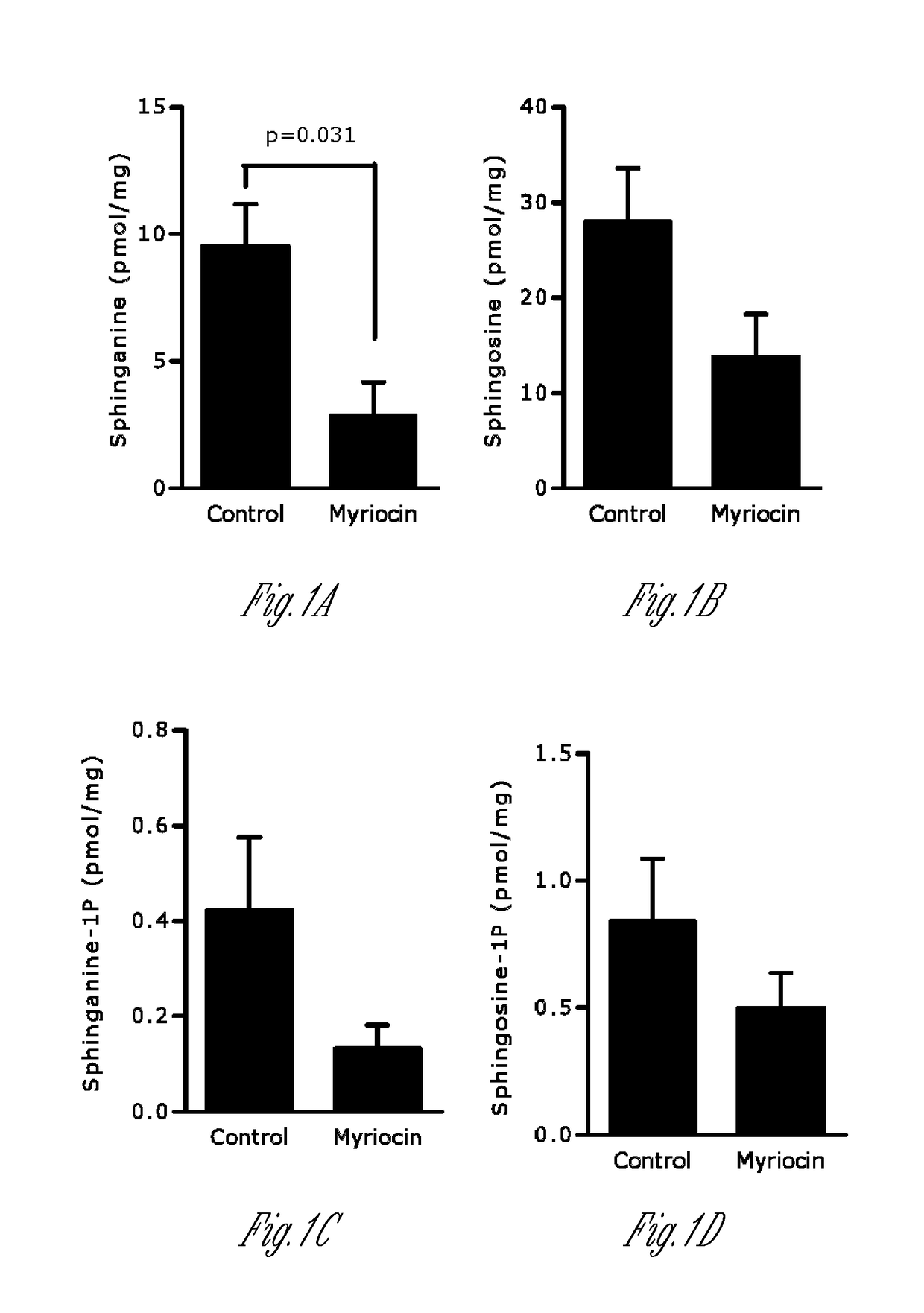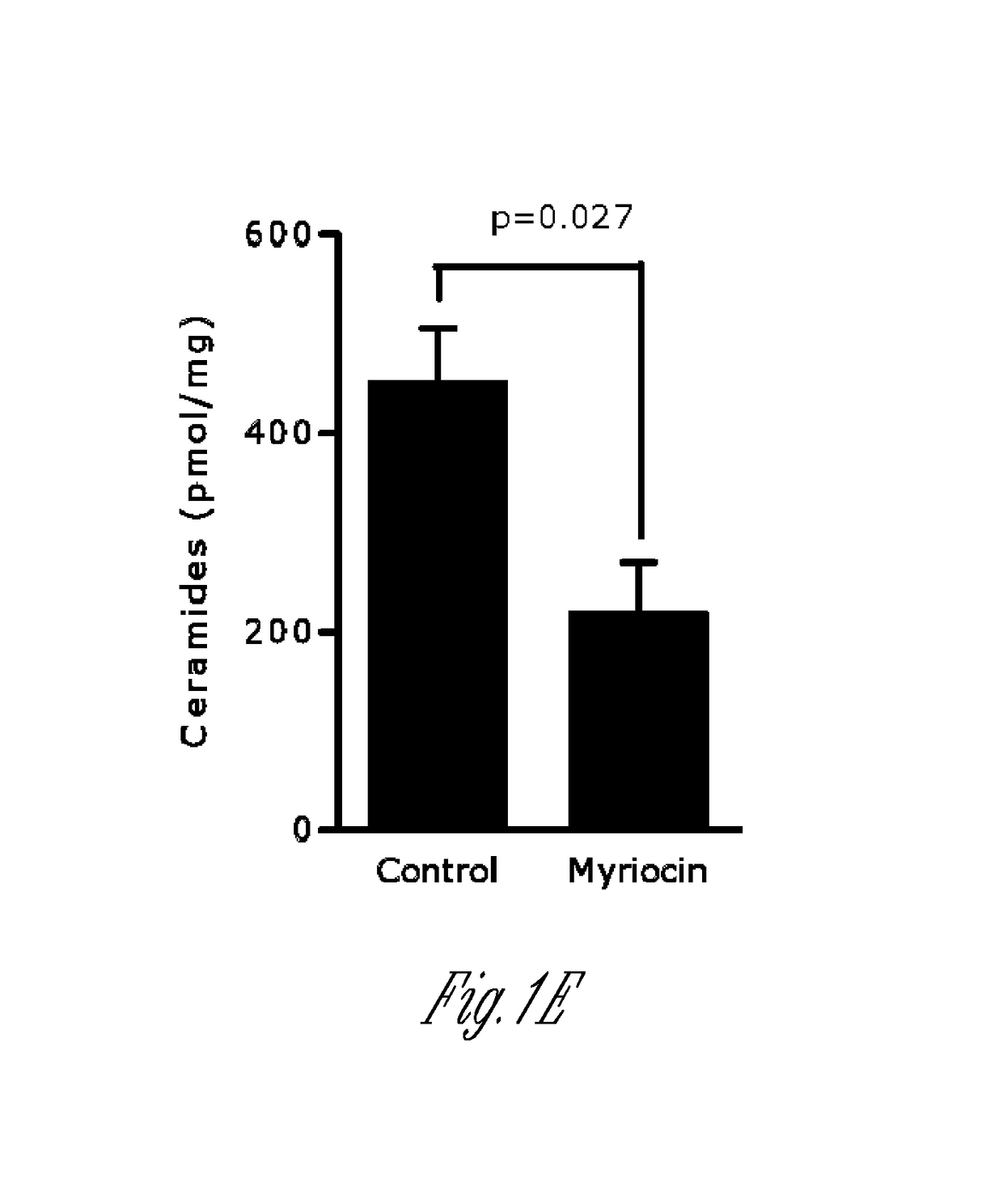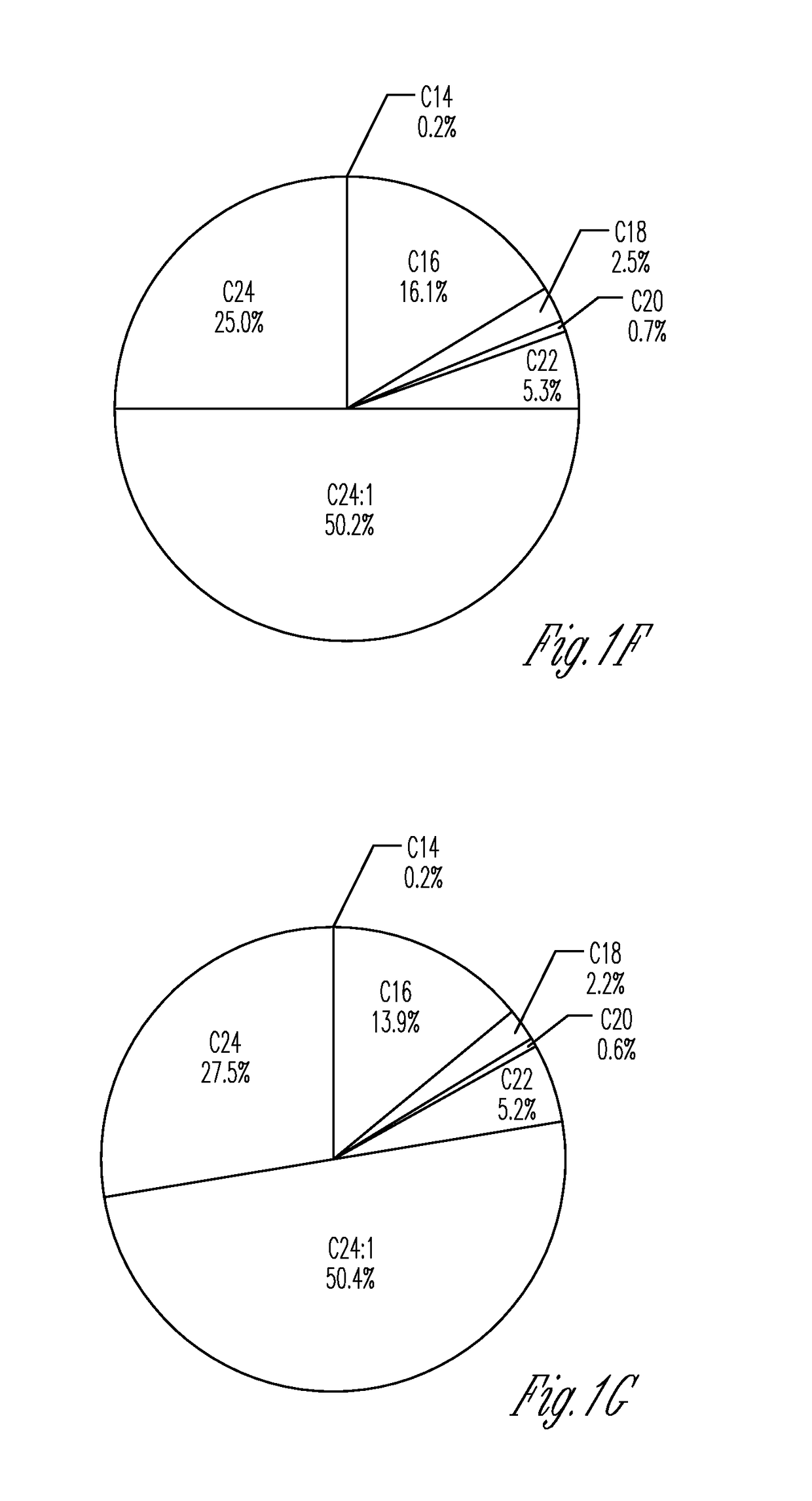Methods to decrease susceptibility to asthmatic bronchoconstriction
a technology of asthmatic bronchoconstriction and susceptibility reduction, which is applied in the field of methods to decrease susceptibility to asthmatic bronchoconstriction, can solve the problems of many side effects and must be taken
- Summary
- Abstract
- Description
- Claims
- Application Information
AI Technical Summary
Benefits of technology
Problems solved by technology
Method used
Image
Examples
example 1
xperiment Methods
[0122]This Example describes some of the materials and methods use in the development of the invention.
[0123]Study Design.
[0124]Each experimental group included a minimum of five animals or bronchial rings per condition. Experiments assessing bronchial reactivity were performed three times. Experiments assessing SL composition, gene expression and inflammation were performed at least two times. The study was not blinded / randomized. The lung histological sections were evaluated by two different investigators in a blinded fashion.
[0125]Mice Studies.
[0126]Animal studies described herein were conducted under protocols approved by the Institutional Animal Care and Use Committee of Weill Cornell Medical College. Female BALB / c mice, obtained from Taconic Farms (Tarrytown, N.Y.). Animals were housed under specific pathogen-free conditions and used at 6 to 8 weeks of age. Myriocin (Enzo Life Sciences, Plymouth Meeting, Pa.) was freshly prepared from a 10 mM stock solution to...
example 2
phingolipid Synthesis Induces Airway Hyper-Reactivity
[0151]This Example provides data showing that impaired sphingolipid synthesis in the respiratory tract induces airway hyper-reactivity.
Impaired Respiratory Tract SPT Alters Pulmonary Sphingolipid Composition
[0152]Myriocin is a potent and specific inhibitor of SPT that affects SPT independent of orm. To assess if direct administration of myriocin to the respiratory tract affects pulmonary sphingolipid synthesis, the lung sphingolipid composition was determined by ultra-performance liquid chromatography-tandem mass spectrometry (UPLC-MS / MS) 3 h following intranasal administration of myriocin. As shown in FIG. 1, myriocin reduced sphinganine in the lung (FIG. 1A). While sphingosine (FIG. 1B), sphinganine-1P (Sa1P; FIG. 1C) and sphingosine-1P (S1P; FIG. 1D) levels were not significantly decreased, the sum of ceramides (C14, C16, C18, C20, C22, C24, C24:1) was decreased by myriocin treatment (FIG. 1E-1G). Certain ceramides were also in...
example 3
Sphingolipid Synthesis Reduces Airway Hyper-Reactivity
[0164]This Example provides data showing that cystic fibrosis transmembrane conductance regulator (CFTR) inhibitors enhance the concentration of sphingolipid intermediates in tracheal epithelial cells and alleviate bronchial hyper-reactivity.
Methods
[0165]GlyH-101 (50 μM) was added to culture media of cystic fibrosis tracheal cells, non-cystic fibrosis tracheal cells or A549 cells (a lung epithelial cell line).
[0166]
Sphinganine, an intermediate of de-novo sphingolipid synthesis, was quantified in cell lysates by LC-MS / MS.
[0167]In another experiment, bronchial rings were isolated from Sptlc2+ / − or Sptlc2+ / + mice and mounted in a myograph. CFTR inhibitor GlyH-101 or the solvent DMSO (control) were added to the bath solution. After 2 hr contractile responses of the rings stimulated with methacholine (10 mM) were determined.
[0168]To evaluate if increasing sphingolipid synthesis in the respiratory tract would alleviate the increased br...
PUM
| Property | Measurement | Unit |
|---|---|---|
| Fraction | aaaaa | aaaaa |
| Level | aaaaa | aaaaa |
Abstract
Description
Claims
Application Information
 Login to View More
Login to View More - R&D
- Intellectual Property
- Life Sciences
- Materials
- Tech Scout
- Unparalleled Data Quality
- Higher Quality Content
- 60% Fewer Hallucinations
Browse by: Latest US Patents, China's latest patents, Technical Efficacy Thesaurus, Application Domain, Technology Topic, Popular Technical Reports.
© 2025 PatSnap. All rights reserved.Legal|Privacy policy|Modern Slavery Act Transparency Statement|Sitemap|About US| Contact US: help@patsnap.com



